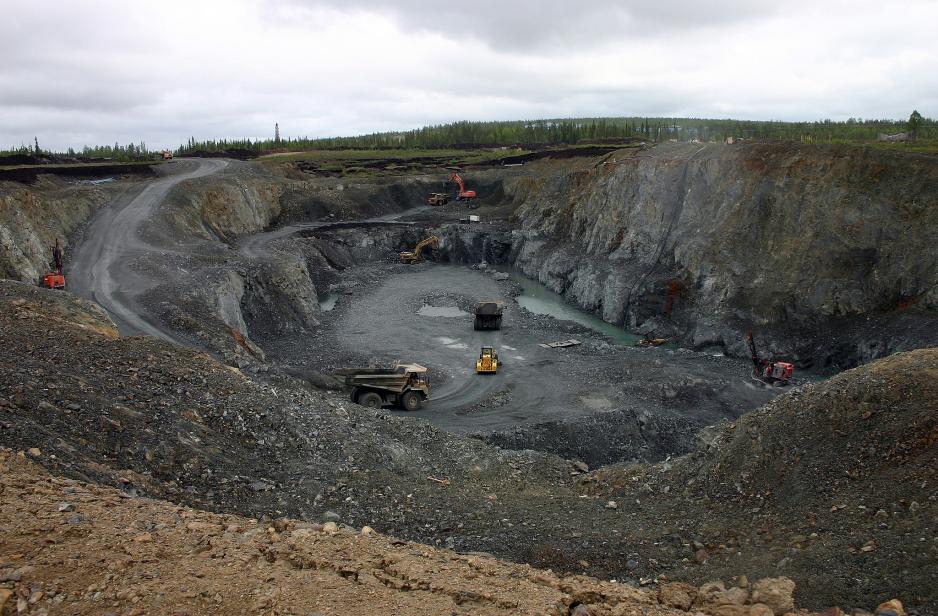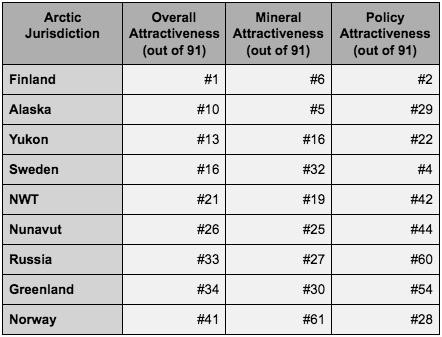The Arctic scores high on annual mining attractiveness survey

In countries and regions across the Arctic, the mining industry is feeling good about investing its capital in new projects. At least according to a new survey by a Canadian public policy think tank.
Last week, the Fraser Institute released its annual Survey of Mining Companies. The survey is circulated amongst hundreds of mining industry executives and primarily aims to measure the "investment attractiveness" of 91 countries and regions based on both their mineral potential and their government policies.
How Arctic jurisdictions rank in 2017
The survey assess 91 jurisdictions, which include whole countries as well as many sub-national regions and provinces. The survey finds that Finland is the most attractive jurisdiction in the world for mining investments in 2017. Alaska comes in at #10 overall with Yukon, Sweden, the Northwest Territories, and Nunavut rounding out the top 30. Russia, Greenland, and Norway all rank in the top half of the 91 jurisdictions studied.
From a perceived mineral potential standpoint (ignoring government policy), the Arctic jurisdiction with the highest ranking is Alaska (#5) and the lowest is Norway (#61).
From a policy standpoint (ignoring mineral potential), the Arctic jurisdiction with the best perceived policy towards mining is Finland (#2) while the jurisdiction with the worst perceived government policy is Russia (#60), according to the survey results.
The 2017 rankings for the nine Arctic jurisdictions in the survey:

Historical trends
The 2017 survey is the first time Finland has been ranked #1 overall for mining investment attractiveness by industry executives, although it has consistently been in the top 10 in past Fraser Institute surveys.
Russia (#33) achieved its highest overall ranking in the last five years. Russia jumped 9 spots from its 2016 ranking (#44) and was a full 50 spots higher than its 2013 rank (#83).
Greenland has had a turbulent history in the Fraser Institute’s annual survey. In 2013, Greenland scored as high as #7 overall and as low as #55 in 2016. In this year's survey, Greenland split the difference and came in at #34 overall.
All other Arctic mining jurisdictions largely maintained their historical rankings in this year’s survey, with only marginal improvements or declines noted.
Policy vs potential
In the Nordics, positive government policy towards mining exploration and investment underpins their high rankings, while mineral potential tends to be lower. On the other hand, in all other Arctic jurisdictions (Alaska, Yukon, NWT, Nunavut, Greenland, and Russia) their high rankings are driven more by their perceived mineral potential, more so than attractive government policies.
Access to full Fraser Institute report here and the executive summary here.
